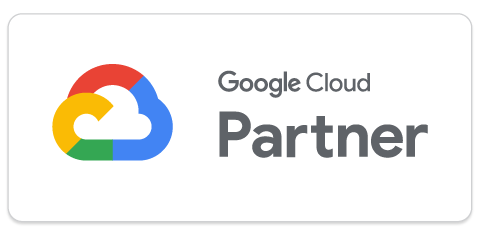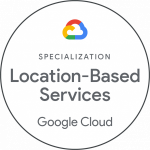The Google Maps API integration has become indispensable for a lot of businesses. This API is especially important for companies that use streetview and all kinds of location services to get their clients to their physical locations. In addition, the API has numerous other capabilities. For example, the tool can be used to do accessibility studies, air quality can be studied, people can be efficiently directed from point A to point B, and so much more!
Whether you run a small business or run a large corporation, understanding the cost structure and efficiently implementing the Google Maps API can make a difference in how your internal business processes work and how your clients learn how to reach you.
In this in-depth article, we will tell you everything you need to know about the Google Maps API in 2024, from pricing to benefits and strategies for effectively using Google Maps API in your business.
What is the Google Maps Platform API?
Google Maps API provides businesses with a lot of interfaces to integrate Google Maps functionalities into their own websites and (mobile) applications. It allows them to visualize location data, create custom maps, provide interactive navigation experiences, improve user experience (customer experience), optimize business processes, etc.
The Google Maps APIs act as building blocks – like Lego bricks – used to develop applications and websites. They can be used individually or combined to give you the insight or information you are looking for and that will benefit your organization. Real-time location data and insights can help increase efficiency and productivity, improve customer satisfaction and grow your business!
For example, your clients can easily and directly use Google Places through your company’s website. This way, your business or an important location can be shown on the map along with all the necessary information. For example, information can include reviews, point of interests (POIs), opening hours, etc.
What’s the difference between APIs and SDKs?
The Google Maps API includes a collection of more than 28 APIs (“Application Programming Interface”) and SDKs (Software Development Kit) that allow business owners and developers to integrate Google Maps features directly into their websites or applications.
An Application Programming Interface (API) is an important part of software development. An API is a type of mediator that allows two different software applications or systems to communicate with each other. An API defines the way different software components should interact and exchange data, facilitating integration between different software products and services.
A Software Development Kit (SDK), on the other hand, is a collection of software tools and libraries that provides developers with the necessary tools to build applications for a specific platform or operating system. Essentially, an SDK acts as a comprehensive toolkit that contains everything needed to facilitate the development and implementation of new software. The content of an SDK can vary depending on the purpose and platform for which it is designed, but it generally includes programming language libraries, development tools, documentation, sample code and tutorials, and even APIs.
Which APIs and SDKs does the Google Maps API offer?
The Google Maps APIs and SDKs provide a lot of functionality for different applications. Below we list the main APIs and SDKs available under the Google Maps Platform.
Google Maps APIs
- Maps JavaScript API: Allows businesses to integrate interactive maps into their webpages.
- Maps Static API: Offers the ability to create simple, non-interactive maps in image format.
- Street View Static API: Used for retrieving Street View images.
- Maps Embed API: Allows you to embed simple Google Maps views with limited interaction.
- Maps URLs: Provides URLs that make it easy to access Google Maps from any browser or app.
- Places API: Used to find detailed information about locations worldwide, including names, addresses, reviews, and more.
- Geocoding API: Converts addresses to geographic coordinates and vice versa.
- Geolocation API: Provides a way to estimate the user’s location based on network information.
- Time Zone API: Used to retrieve time zone information for a specific location.
- Direction API: Provides directions between multiple locations for different transportation options.
- Distance Matrix API: Gives travel times and distances between points in different areas.
- Roads API: Can be used to obtain traffic situation information and to correct routes on roads.
- Elevation API: Provides elevation data for various points on the Earth’s surface.
Google Maps SDKs
- Maps SDK for Android: Provides tools to integrate maps and location features into Android applications.
- Maps SDK for iOS: Allows developers to integrate Google Maps into iOS applications.
- Maps SDK for Unity: Allows businesses to use real-world, customizable 3D maps for gaming applications with Unity.
- Maps Web Services SDK: Provides access to Google Maps Platform Web Services, such as Directions API, Geocoding API, and more, for server-side applications.
Each of these tools has its own specific applications and helps businesses and developers integrate advanced and interactive map-related features into their applications and websites.
How do you get started using the Google Maps API?
To get started using the Google Maps API, you need to take the following steps:
- Create a Google account or log in to your existing Google account.
- Log in to the Google Cloud Console.
- Activate the Google Cloud Platform.
- Set up a Google Cloud project.
- Link a billing account.
- Obtain a valid API key and enable your APIs/SDKs.
Why do you need to use Google Cloud?
Obtaining a valid API key requires having a Google Cloud project with activated billing.
What is a Google Cloud project?
A Google Cloud project serves as the organizational framework for managing Google Cloud services. Billing in Google Cloud is handled through a separate billing account linked to your Google Cloud project.
What is a Google Cloud billing account?
A Google Cloud billing account is a separate account, aside from your Google account, that can be set up through the Google Cloud Console.
This account determines who pays the cost of using Google Cloud resources and Google Maps APIs. Google Cloud projects must be linked to an active Google Cloud billing account to start Google Cloud or Google Maps Platform services, even if these services are free.
When you first sign up to the Google Cloud platform, you get a free 90-day trial with $300 in credits. If the first billing account you create is used for a project with enabled Google Maps APIs or SDKs, the credits from your free trial can be used to pay for them.
How are Google Cloud services billed?
Google Cloud uses a pay-as-you-go billing system, where you only pay for the services that are active in your project. By default, you will need to link your credit card to your billing account, which will automatically debit the fees. If you work with a Google Maps Premier partner such as Localyse, you don’t need to link your credit card and fees are charged via invoice.
What does the Google Maps API cost in 2024?
Google also uses a pay-as-you-go billing system for APIs, where you pay for the services that are active on your website or in your application.
Each API has an individual price based on monthly usage. Monthly rates generally range between $2 and $30 per thousand API requests.
An API request is triggered when the API is called to retrieve data or perform a particular action, such as providing geo-coordinates or time zone information. Your requests can be viewed and managed in the Cloud Console on the quota page of the Google Maps Platform.
To get you started in making a decision about which APIs to use, we’ll provide you with some deeper insights into the pricing structure:
Base rates
Depending on the API service, base rates vary as follows:
- Static cards: $2 per 1,000 requests.
- Dynamic maps: $7 per 1000 requests.
- Location data (such as address to coordinates): $17 per 1000 requests.
- Routes and directions: $5 to $10 per 1000 requests, depending on complexity.
Other rates
You get a $200 credit every month as a gift. This allows you to test the services extensively and make an informed decision about which APIs and SDKs are necessary for your business.
If you want to use more advanced features such as Street View and high-volume Routes, other rates apply. You can discuss this with Google or work with a partner like Localyse. As a Google Premier Maps Partner, we can give you additional volume discounts of up to 90% off the standard rates.
Want to know more about the rates that Google uses? Check them out here.
Why is the Google Maps API a good solution for your business?
The API allows you to customize and personalize maps so that they always perfectly fit your brand and the needs of your business.
Using the Google Maps API helps you, your suppliers and your clients efficiently plan the route to your business and vice versa. This is ideal for logistics services and delivery services, for example.
The Google Maps API provides an improved user experience thanks to the interactive maps that increase user engagement. In addition, the integration of the Google Maps API allows you to reach a global audience and provide them with local map data.
How can you use the Google Maps API efficiently in your business?
The integration of the Google Maps API can make your business and work processes more efficient and optimized in a lot of different ways:
- Monitor usage: Take advantage of Google Cloud’s monitoring tools to manage your usage and costs.
- API management: Ensure efficient management of API requests to avoid unnecessary costs.
- Development and testing: Take advantage of Google’s extensive testing capabilities to optimize your implementation.
Conclusion
Integrating Google Maps API on your company website or web application is not only a strategic choice, but also an important step towards digital innovation and customer satisfaction. By efficiently using Google Maps APIs and SDKs, you can significantly contribute to the visibility and accessibility of your business.
Whether strengthening the user experience, increasing the efficiency of your logistics services, or simplifying the way clients find you, Google Maps API provides a versatile and cost-effective solution. With the right usage and management strategies, such as monitoring your usage and applying caching, the Google Maps API can help your business become more efficient and customer-focused.
In short, implementing and effectively using Google Maps API in 2024 is a smart move that can help your business and its online visibility grow!
Want more information about the Google Maps API or want help optimizing your use of the Google Maps platform? Contact us! Localyse is happy to help you optimize all your location-based strategies.





